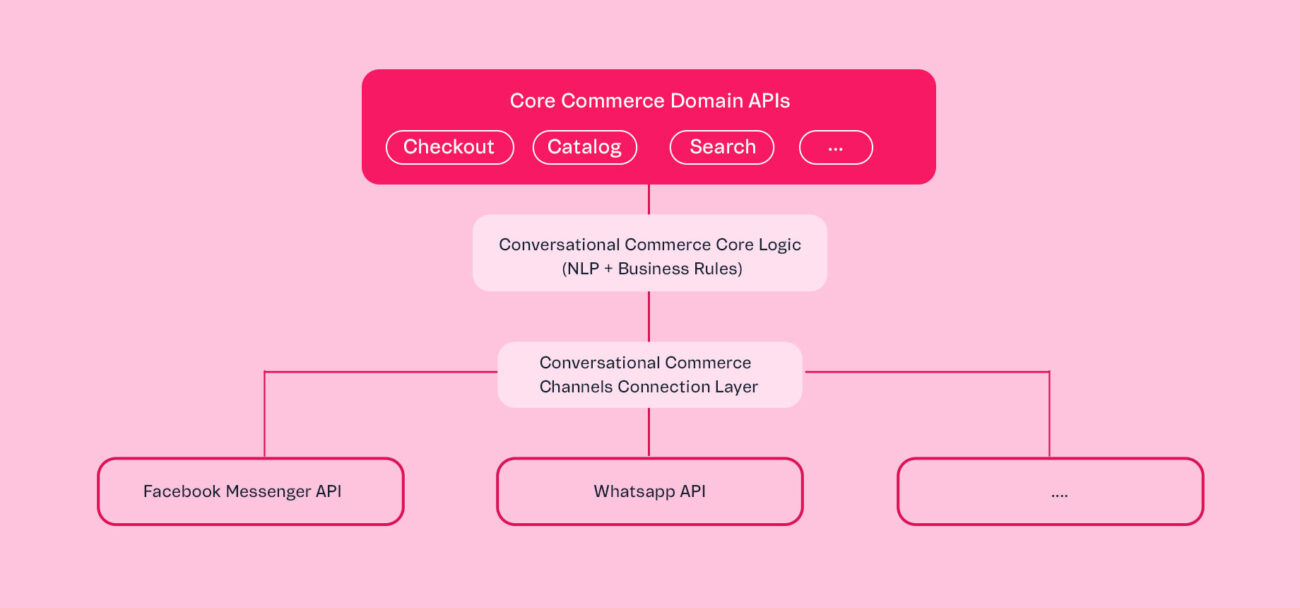
Human beings have always loved conversation. This is what makes us unique, our ability to be social. And commerce has always been, at its core, all about conversation.
At first, digital commerce brought a more transactional approach. More recently, however, the technology evolved and better discovery experiences became available, like live shopping, 3D models, augmented reality and omnichannel integrations. Now, it’s time for conversations to benefit from the best of the three worlds: discovery, interaction and transaction. Now, it’s time for true conversational commerce.
The conversational commerce trend has an immense impact on omnichannel operations, where there’s a huge opportunity to use the spare time of the brick-and-mortar sales workforce to handle requests from digital channels. At the same time that online shoppers get a personal and tailored experience, the associates can refer in real time back to past online interactions and use these to inform product recommendations going forward. All in all, this leads to an enhanced shopping experience.
For sure, conversational commerce is not all about local sales reps, as there’s a lot of automation and artificial intelligence (AI) usage to leverage. Computer-driven bots are becoming more human-feeling, to the point where the buyer can’t detect the difference and will interact with both the human agent or computer bot in a pretty similar way.
It’s a very powerful strategy to use conversational commerce, both with chatbots and human agents, but only possible if your digital commerce has been built on solid ground. The foundation is a comprehensive omnichannel and API-first composable architecture. With a scalable and API-based commerce platform in place, it is going to be a new sales channel, and an increasingly growing one at that.
Furthermore, chatbots can be integrated into analytical systems to record and get information about customer preferences and use whatever is obtained in future communications and campaigns. In a hybrid scenario, the sales reps tend to be a second layer of communication and customer service, triggered by the bot when the buyer’s session needs escalation.

There are three main parts of a conversational commerce solution and VTEX’s offering is no different. Let’s take them one by one.
There are some simple chatbots that offer well-defined options and allow buyers to navigate directly on them. More sophisticated ones, however, rely on natural language processing (NLP) to identify intents in text. When creating a chatbot you should look carefully at NLP strategies. Models should be created / customized and, most importantly, trained so that they can generalize better.
For instance, at VTEX, we are creating on top of Rasa, an open-source project that provides natural language processing to turn messages from users into intents and entities that chatbots understand. We are extending the models to encompass a commerce- application.
There are many NLP tools available on the market, from IBM Watson to Google Dialogflow. When considering whether to create a chatbot solution, it tends to make sense to start using a well-established tool and build on top of it. This will save you some precious time and effort.
In a commerce chatbot architecture there are modules other than the NLP. Another relevant module is the channels module: it’s the contact point with the numerous conversation channels. It acts as a middleware that maps the commerce platform’s APIs to APIs from WhatsApp, Facebook Messenger and other messaging apps.
This module should be created as a composable one, so you can set up the part that connects with the commerce APIs and then add the channel connections progressively.
The third module to take into consideration is the connection between the conversational layer and the commerce APIs. In VTEX, the main APIs used from the commerce layer are:

Here are some pieces of advice if you’re looking to implement a conversational commerce platform or solution:
Today’s merchants should not be underestimating the conversational trend. They should be looking for solutions to offer their buyers this new channel. At the end of the day, it’s a new sales channel, which is going to combine nicely with marketplace, online stores, mobile apps, social media integrations, assisted telesales and so on.
The most important asset that is going to support a successful conversational commerce implementation is a commerce platform that is scalable enough to uphold the new demand that arrives with a new sales channel. It should be an API-based commerce platform, so you can rely on the APIs to use the commerce features directly from the chatbot integration.
If your commerce platform offers any out-of-the-box offer for conversational commerce, it could be an accelerator, meaning you can avoid distraction and focus on selling instead of perfecting the tech stack. If you run a very unique business and have very specific demands on your NLP capabilities, it could even make sense to train your own model.
To that end, VTEX has acquired Suiteshare and offers its conversational commerce solution as part of its portfolio. As a composable commerce platform, VTEX is open to integrate with many other different vendors from the market. If you think we’re a fit for your business, make sure to reach out.

